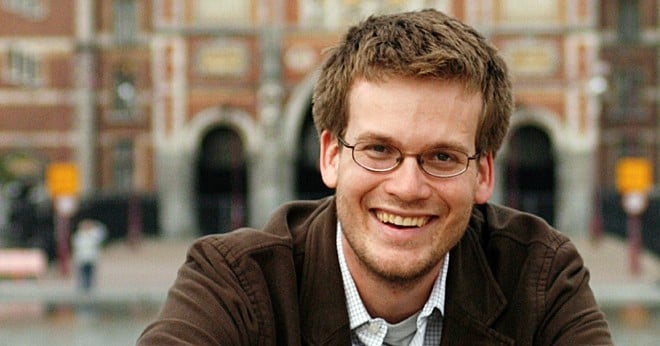
In deliberately treating his young readers as people on their way to adulthood, Green is empowering them to trust themselves and the uniqueness of their experiences

The written word has, for long, been divided into different genres, possibly to make it easier to unravel the complexities inherent in any work of literature. A late entrant into the field of categorisation is young adult literature (YA literature) which, with the target audience of readers between the ages of 12 and 18, is currently enjoying a ‘renaissance’ brighter than its golden age during the 1970s.
Lighting up the path for a new crop of YA literature, series like Rowling’s Harry Potter and Meyer’s Twilight vampire saga brought fiction for adolescents to the front of bookstores all over the world. Today’s adolescent literary options are a far cry from the 1980s’ ‘single problem novels’, addressing everything from the supernatural to identity crises.
In recent years, since 2005 to be exact, John Green’s name has been popular in the ever-evolving world of YA literature.
Awarded the Michael L. Printz Award in 2006 for his debut novel Looking for Alaska, 36 year old Green has been continually showered with accolades from critics and fans alike for his uncanny ability to portray the angst of teenage life without being condescending. Called the ‘Teen Whisperer’ by Time and included in the magazine’s list for the 100 Most Influential People of 2014, Green apparently has his finger on the pulse of the adolescent experiencing life unadulterated (pun not intended).
His New York Times best-selling novel The Fault in Our Stars reached the number 1 spot on Amazon six months prior to its release! Its movie adaptation has enjoyed a similar success story at the box office.
One reason for the popularity of every John Green venture is the huge fan base he has garnered as one half of the VlogBrothers. Set up in 2007 in collaboration with his brother Hank, the channel on YouTube hosts an internet-based show with a whooping two million subscribers that now go by the name of ‘nerdfighters’. Realising the immense out-reach of the VlogBrothers, John and Hank have branched into online educational projects such as VidCon and Crash Course.
Internet savvy aside, what is it that makes John Green’s work, to borrow a phrase from teen vocabulary, tick? Is it the raw vulnerability of his characters? Or the portrayal of the struggle young adults face as they attempt to strike a balance between trepidation and hope once they leave the cocoons of familiar surroundings and experiences?
Or is it the writer’s persona that shines through his words and upholds his young readers’ trust in him to ‘get it right’?
It is all that and more. John Green is the current champion of young adults everywhere not just because he is able to articulate the simultaneous rationality and irrationality of teen thought, but because he does it without belittling the significance of their emotional experiences.
Dealing with adult condescension is often a rite of passage for teenagers. That same patronisation is sometimes extended towards YA literature. It is pleasantly surprising to see that books like John Green’s are pushing back the boundaries imposed upon the universality of their prose. Green’s novels are driven by the search for answers to some of mankind’s fundamental conundrums. Even though questions about existential dilemmas are asked by the teen characters, the parents of adolescent readers are equally interested in the interpretations he offers.
In An Abundance of Katherines, which won the Printz Honor Award in 2007 and the Edgar Allan Poe Award in 2009, the protagonist Colin constantly frets about how to "matter". This fear of fading into "oblivion" without leaving any "mark" of one’s existence in this world as expressed by Augustus Waters, one of the star-crossed lovers stricken with cancer in The Fault in Our Stars, is at the heart of each one of Green’s award winning novels. Miles Halter whose story we follow in Looking for Alaska, calls it the "Great Perhaps".
Like all of us, the characters on the pages of Green’s novels start out with the desire to create a forever out of a finite existence. It is through their trials, or what the character of Miles refers to as the "labyrinth of suffering", that Green shows the readers that "some infinities are bigger than other infinities". Grappling with issues as profound as the need to understand and rise above insecurities, grief and the finite nature of existence, the adolescents populating Green’s stories reflect the indomitable spirit of teenagers everywhere.
Writing from the teens’ perspective, Green tackles issues like death, illness, grief, failure and vulnerability realistically. His approach does not sugar-coat the dilemmas of human existence for adolescents and in deliberately treating his young readers as people on their way to adulthood, Green is empowering young adults to trust themselves and the uniqueness of their experiences. He does not promise his readers happy-ever-afters and neither does his writing shy away from the reality that the world is not a "wish-granting factory". Through his self-deprecating characters, he manages to portray the dualities of human experience without resorting to sappiness.
John Green’s million-strong fan base is proof that he has accurately captured the essence of adolescent thought as they transform into adults, and in doing so, probably achieved his own "Great Perhaps".
The article was published under the title "No fault in his stars" in The News on Sunday on July 13, 2014.